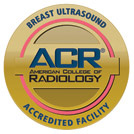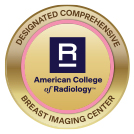General radiography is an imaging procedure using X-rays to view internal parts of the body. A small amount of ionizing radiation is used to create a static image or assist with planning radiation therapy treatment.
What Is an X-Ray?
Non-invasive X-ray procedures are typically requested for diagnostic purposes. As the oldest and most frequently used form of medical imaging, ionizing radiation helps create pictures of the body’s internal structures. These images indicate the presence or absence of a disease, structural abnormality, physical damage such as bone fracture or a foreign object.
During the procedure, an X-ray beam passes through the area of the body being observed. To generate an image, some of the X-rays are absorbed or scattered by the body’s internal structures and the remaining radiation is recorded by a detector. A table or wall-mounted detector uses plates to produce a digital image or create an X-ray film. A tube designed to generate X-rays sits opposed to the detectors and can be about three to six feet away from the patient.
Depending on the imaging procedure, the patient will stand or lie down. In certain cases, such as emergency care, a portable X-ray machine with a tube attached to a movable arm may be substituted. A technologist will then place the X-ray plates below the patient.
Not all parts of the body absorb X-rays equally. This factor determines how the images will render, as bone absorbs more radiation than soft tissue. You will notice the bones appear almost bright white and organs have a gray appearance.
While radiography is straightforward, X-ray technology comes with one key risk: Radiation exposure. Although low, extended or extreme exposure can be associated with cancerous growths and birth defects in a developing fetus.
Who Should Have This Procedure?
When a doctor wants a static image for diagnostic purposes, an X-ray is often requested. These scenarios can include:
- Diagnosing bone and joint conditions such as fracture, cancer, arthritis or infections
- Helping ensure that devices or markers are placed correctly before a patient undergoes an invasive surgical procedure
- Mammography
- Orthopedic exams
- Chiropractic assessments
- Examination of the chest area, including the lungs, heart, surrounding bones and organs
- Pairing static images with the motion captured by fluoroscopy
What to Expect During Radiography
Patients should experience little to no discomfort during an X-ray. However, you may be asked to hold an awkward position or multiple sets of images may be needed to get a clearer picture.
Prior to imaging, no preparation is needed. Patients should tell their doctor if they are or think they may be pregnant to prevent exposing a developing fetus to radiation.
Metal can interfere with image quality, so patients will need to remove any objects before the procedure, including jewelry, clothing with zippers or buttons, eyeglasses, hearing aids and dental instruments.
Due to radiation exposure, the technologist or radiologist will be in another room to control the X-ray machine and ensure the images are clear and usable. You’ll be asked to remain standing or laying on the table until the radiologist verifies all images captured are satisfactory. The procedure can take anywhere from five to 30 minutes.
Today’s X-ray images are presented digitally on a computer screen. The radiologist will assess the results and communicate them to your doctor, who will reach out to discuss the findings and schedule any follow-up tests or treatments.
Has your doctor recommended an X-ray procedure? Contact Midstate Radiology Associates to make an appointment today.
















